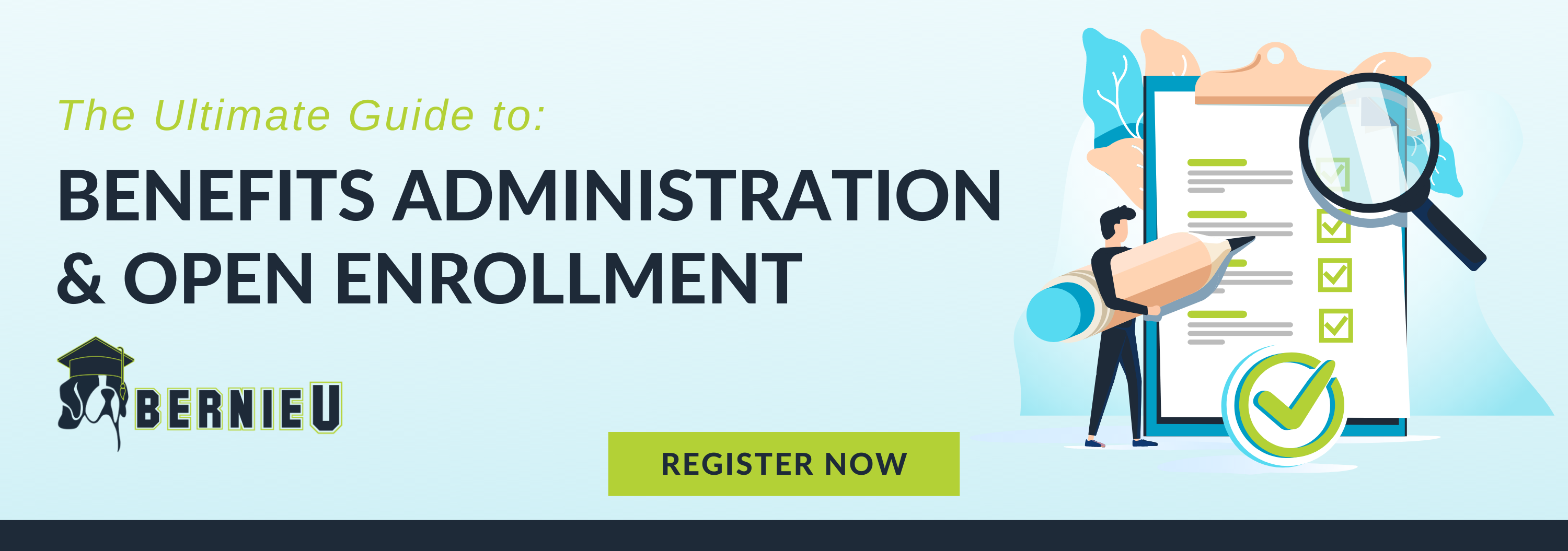Written by
Will Miranne
Will is an aPHR-certified writer on the marketing team at BerniePortal. He writes about healthcare, human resources, and benefits.
When Should You Consider a PEO for Your Organization?

A professional employer organization (PEO) can offer human resources support and allow an employer the opportunity to grow exponentially. But with all the benefits of outsourcing your HR needs with a PEO, do they outweigh the potential downsides? Is a PEO truly beneficial to your organization? Read more to find out whether your business should consider using a PEO to help grow your business.
What is a Professional Employer Organization?
A PEO is a business entity that provides a variety of administrative tasks for an organization, including HR services, onboarding, payroll, benefits, and more. This is done through a co-employment relationship in which PEOs effectively become the employer of record. They then “lease” employees back to the organization.
This can be helpful for smaller organizations looking for an affordable way of outsourcing their HR needs. This being said, there are many factors to consider when determining whether or not a PEO will satisfy your organizational needs both effectively and efficiently.
What are Key Factors When Considering a PEO?
When considering a PEO, it is crucial that organizations take a close look at their needs and the resources available to them. Hiring a PEO will change your entire organizational strategy and thus needs to be a well-devised business decision. There are several key factors most organizations will need to consider.
Fees
-
Fees for a PEO can range as a percentage of payroll or on a per-employee per-month (PEPM) basis. These costs range, but are generally between 2 percent to 12 percent of payroll, or $500 to $2,000 PEPM annually.
-
It is important to consider fees when hiring a PEO. Knowing the affordability of a PEO—as opposed to the costs associated with maintaining HR needs internally— will determine the overall needs of the organization.
Workers’ compensation
-
PEOs have their own workers’ compensation rates. This can create savings for the group or create a larger expense. This depends on the employer’s prior experience with workers’ compensation as a standalone entity.
-
The PEO is entirely responsible for the workers’ compensation insurance and rates.
Health coverage
-
Similarly, PEOs offer their own health plans. This can be a good solution for some groups, depending on their experience offering and paying for health coverage on their own. However, one key point of consideration is that the health plan is the PEO’s. In other words, the PEO picks the plan design and what the employer contributes from year to year. Additionally, some carriers do not work with PEOs.
Administration
-
A PEO can help groups move their HR processes, such as onboarding and COBRA, online. However, there are other options for small and mid-sized businesses to do this. If HR administration is a pain point in your organization, evaluate HR software solutions before working with a PEO, which represents a larger business decision and shift in strategy.
Understanding risk management—and how each of these factors affect your organization, from recruitment strategy to health insurance—will help you to determine whether or not a PEO is the best option for you. Once you have determined your needs as an organization, take a look at whether or not it makes long-term sense for you to contract with a PEO.
What Are the Major Advantages and Disadvantages of a PEO?
Pros:
-
A PEO allows businesses to gain cost-efficient resources that can help them grow their organization by taking over all employment responsibilities.
-
An employer can outsource the administrative tasks associated with HR, such as the key factors listed above.
-
PEOs are a great way for smaller organizations to offload responsibilities that may be overwhelming.
-
HR outsourcing can provide you with better employee benefits.
Cons:
-
A PEO takes total control over resources such as healthcare plans, offering a lack of flexibility.
-
The employer loses control over many of the decisions that affect their business and their employees.
-
As companies grow, the costs may not be worthwhile.
-
Lack of accessibility with an offsite HR team may cause frustration amongst employees.
How Do You Know When You’ve Outgrown a PEO?
Expenses are outpacing value
-
PEOs often charge a percentage of payroll, targeting their service fee to equate to $1,000 - $1,500 per employee per year. As a result, PEOs become more expensive as organizations grow, and many businesses find they reach a tipping point where the cost has outpaced the value.
-
If your organization has experienced or expects to experience significant near-term growth, consider other options for HR and benefits administration.
Customized Needs and Benefits
-
Small organizations may initially find it valuable that a PEO can provide benefits such as workers’ compensation, retirement plans, and health benefits. However, PEOs employ a one-size-fits-all strategy, and many organizations find that they need or want more customization in benefits or payroll.
-
As the hiring environment has become so competitive, many organizations are looking to provide more personalized benefits to employees. This is typically not possible with a PEO.
Redundancy
-
While a PEO can be valuable for very small teams with limited bandwidth, many groups find that PEO services become redundant as they hire, and the organization’s needs are better served by an internal team member.
How to Move On from a PEO
If you have determined that a PEO is no longer the strategy that best benefits your organization, then you should first consider all of the key factors affected by the change.
The next step is to work with an experienced benefits broker. A broker can handle all benefits and insurance-related needs—including health benefits and COBRA—and can assist you in developing a transition plan for additional items.
Working with a benefits advisor that provides access to HR software will also streamline the transition process. Many brokers offer a Human Resources Information System (HRIS) like BerniePortal that can handle applicant tracking, onboarding, benefits enrollment, time tracking, and more as part of their value proposition.
This allows small organizations to bring the administrative tasks associated with the employee life-cycle online, in turn cutting the paperwork and reducing time spent on HR.
Is a PEO Right For You?
As mentioned above, PEOs have their advantages and their disadvantages. So, how do you know if you really need one or not? Considering all of the factors will help you to determine where you fall in terms of the benefits and costs of utilizing a PEO. Take a close look at all benefits handled through a PEO and understand where your needs lie. Can you handle 85% of HR needs but struggle with 15%? Understanding the scope of your needs can help you to determine whether a PEO is ultimately necessary.
Written by
Will Miranne
Will is an aPHR-certified writer on the marketing team at BerniePortal. He writes about healthcare, human resources, and benefits.
Related Posts
We just wrapped up another phenomenal Weekdays with Bernie (WWB) Conference!
Employees are the heart and soul of an organization, and valuing their opinions can have...
HR parties of one already have an abundance of tasks to keep up with. From hiring to...
The talent search is no longer a skirmish or a battle. It’s a WAR! As a strategic HR...







Submit a Comment